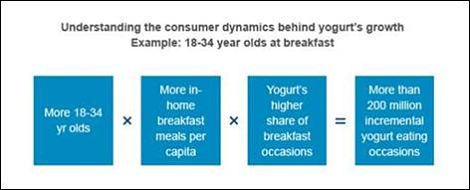Young Adults, Breakfast Occasions Driving Yogurt’s Growth
CHICAGO -- Consumption of yogurt has more than doubled per capita during the last 10 years, and now nearly one in three consumers eat yogurt, according to new research from The NPD Group. Driving the segment's strong growth over the last decade is yogurt's increasing popularity among young adults, as well as its consumption during in-home breakfast occasions.
"Although there are currently some marketplace changes in the category, yogurt has shown remarkable growth over the last decade and innovation like new packaging and Greek-style yogurts continues to breathe new life into the category," said Darren Seifer, NPD's food and beverage industry analyst. "Innovation in the yogurt category is just one component. Taking a look into U.S. homes to see the behavioral drivers behind yogurt’s growth helps to round out the story for food marketers interested in either riding this wave or trying to replicate this story in other categories."
Three-fourths of all yogurt consumption takes place in the home, and the segment has posted growth across all eating occasions – breakfast, lunch, dinner and between meals, according to NPD’s analysis. Consumers use yogurt as a meal, a meal replacement, a snack and even as a dessert.
Over the last five years, the in-home breakfast occasion has been the primary driver behind incremental yogurt eating occasions, accounting for 39 percent of them. Between-meal snack occasions account for 20 percent of the incremental yogurt eating occasions and lunch follows at 19 percent.
NPD found that more than half of yogurt’s growth at breakfast can be attributed to consumers in the age groups of 18 to 34 and 45 to 64. Taking a closer look at the younger age group, the research identified several dynamics that are working together to result in these incremental eating occasions.

For instance, the number of 18- to 34-year-olds in the U.S. population has risen approximately 6 percent since 2007. Additionally, over the past few years, members of this age group have been eating breakfast in the home more often, which accounts for the yogurt category’s share of breakfast occasions increasing among young adults. The combination of these factors has resulted in approximately 200 million incremental yogurt occasions among 18- to 34-year-olds, according to the study.
"As is typically true in cases of remarkable success, there are many intersecting elements to yogurt’s success story," Seifer added. "The consumer dynamics behind its growth provide key insights that help identify future opportunities for yogurt and other categories."
